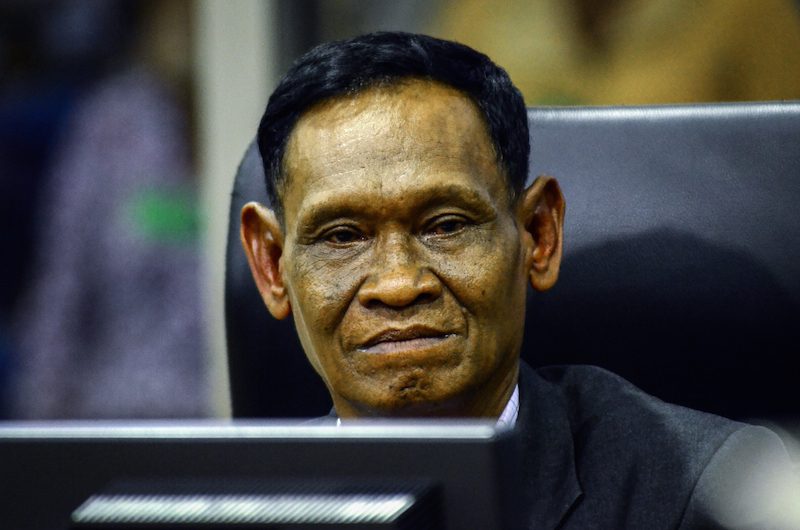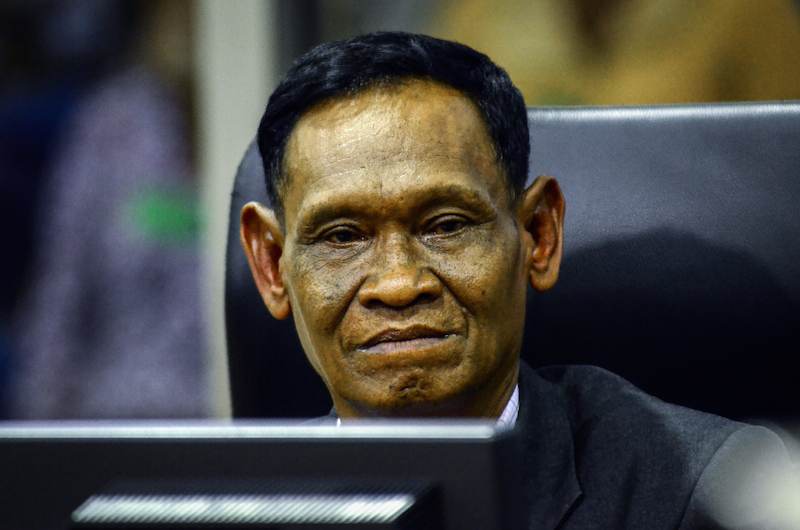A former soldier told the Khmer Rouge tribunal on Monday that he witnessed the execution of Chinese and Vietnamese people on an island in Kandal province, killings ordered as part of an effort to “cleanse” the country of ethnic minorities.
Seng Soeun, 60, said he joined the Khmer Rouge guerillas in 1972 and was transferred to a disabled unit in the Southwest Zone after he was injured during a 1975 battle.

About three years later, he was sent to Kandal province, where he worked as chief of the Sa’ang district office.
Shortly after moving, Mr. Soeun said he witnessed the murder of 10 Chinese and Vietnamese residents on Koh Kor island in the Tonle Bassac river.
“I was not allowed entry into Koh Kor by the chief there, but I said I had the authority because I was the district office chief. I went up there and I witnessed the execution,” he recalled.
“Those people were blindfolded and, one by one, they were killed. After that, I knew what happened on the island and I was fearful that maybe my turn would be next, so I left,” he said.
Mr. Soeun said he received lists of Chinese and Vietnamese residents while head of the district office, but claimed he was not told how the lists would be used.
He said, however, that rhetoric referring to the “cleansing” of ethnic minority groups was pervasive among cadre, and spoke of study sessions during which plans for a pure Khmer society were outlined.
“I was there when the Yuon and the Chinese were cleansed—that’s the word they used. They did not want any other race except the Khmer,” Mr. Soeun said.
“Everybody knew about the use of that phrase. In every study session I attended—that is, even before I arrived in Sa’ang district—that was the policy of the [Communist Party of Kampuchea]: to cleanse or to purge,” he said.
The treatment of ethnic Chinese citizens has been controversially omitted from the genocide charges in Case 002, wherein Khmer Rouge second-in-command Nuon Chea and head of state Khieu Samphan stand accused of directly targeting ethnic Vietnamese and Cham Muslims due to their ethnicity.
In his book “The Pol Pot Regime,” prominent academic Ben Kiernan argues that Democratic Kampuchea was “the worst disaster ever to befall any ethnic Chinese community in Southeast Asia.” Of a population of 430,000 in 1975, only about 215,000 survived the regime, he writes.
As for the Vietnamese, Mr. Soeun described hearing direct plans to kill members of the ethnic group.
“They instructed us that the Vietnamese must be killed,” he said.
“For example, the Khmer man married to a Vietnamese woman and they had children—the policy was that only the Vietnamese woman would be taken away to be killed. The children and the father would be spared. That was the policy that I remembered.”




